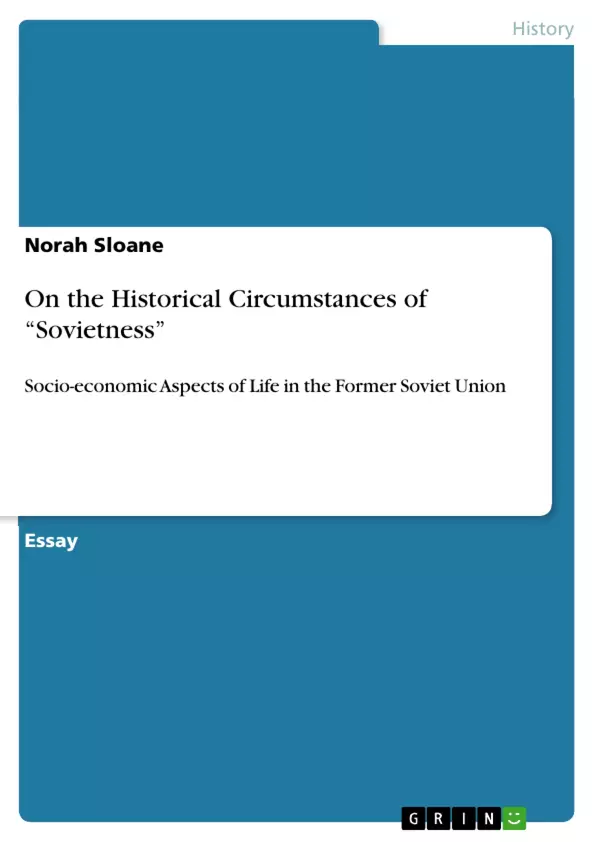This essay takes a closer look at some aspects of life in the former Soviet Union.
The Soviet Union emerged out of a utopian vision of a fabricated "shelter" for the workers of the world. Built on the skewed and butchered words of Marx and Engels, empire born revolutionaries in the early twentieth century organized and printed countless newspapers pumped full of their hate of imperialism, capitalism, and inequity. They mustered the strength to remove the Tsars in the midst of the world’s first grand war toppling the autocratic regime that ruled from the Baltic Sea to the Pacific and from the Arctic Ocean to the Black and Caspian Seas. The work of these fringe extremists, of these intellectual middle-class men, these self-proclaimed emancipators, set the stage for decades of social abuse upon millions of people.
The vision for the Soviet Union, as painted by Lenin, and subsequently painted over and framed up by Stalin, was one of a uniform state free of the burdens of choice. The lands and peoples under the Soviet legislative body existed stripped of sovereignty, freedom, expression, and volition. Stalin intended to rip the past out of people to formulate his vision for the future. All peoples, regardless of race, ethnicity, and gender were to be stripped of their cultural backgrounds, their religious roots, their familial affinities, and their geographically embedded social positions. The Soviet people were a new breed birthed into an age of collective destruction. Communities and their timeless histories were inked over with the deep crimson of the flags of the Red Army.
Table of Contents
- The Circumstances of “Sovietness” and the March of Red Progress
- The Soviet Ideal and Its Evolution
- The Shaping of the Soviet Ideal
- The Soviet Ideal Under Stalin
- The Post-Stalin Era
- The Role of the State and Bureaucracy
- The Five-Year Plans
- The Power of Bureaucracy
- The Corruption of the System
Objectives and Key Themes
This text examines the emergence and evolution of the Soviet ideal, exploring how a utopian vision of a classless society transformed into a system of social control and oppression. It delves into the role of the state, bureaucracy, and individual agency in shaping Soviet society.
- The formation and development of the Soviet ideal
- The impact of Stalin's reign on Soviet society
- The role of bureaucracy in perpetuating and reinforcing the Soviet system
- The relationship between the state and the individual in Soviet society
- The consequences of the Soviet system's inherent contradictions
Chapter Summaries
- The Circumstances of “Sovietness” and the March of Red Progress: This chapter introduces the origins of the Soviet Union, tracing its roots to the utopian ideals of Marx and Engels. It highlights the rise of revolutionary movements in Russia and the establishment of the Soviet state.
- The Soviet Ideal and Its Evolution: This chapter examines the evolution of the Soviet ideal, focusing on the impact of Stalin's rule and the subsequent post-Stalin era. It explores how the Soviet regime shaped the lives and experiences of its citizens.
- The Role of the State and Bureaucracy: This chapter delves into the role of the state and bureaucracy in Soviet society. It analyzes the impact of Stalin's Five-Year Plans and explores the ways in which bureaucracy became a tool for control and oppression.
Keywords
Key terms and concepts central to this analysis include: Sovietness, utopianism, revolution, totalitarianism, Stalinism, bureaucracy, social control, oppression, Five-Year Plans, and individual agency.
- Arbeit zitieren
- Norah Sloane (Autor:in), 2015, On the Historical Circumstances of “Sovietness”, München, GRIN Verlag, https://www.hausarbeiten.de/document/454668


